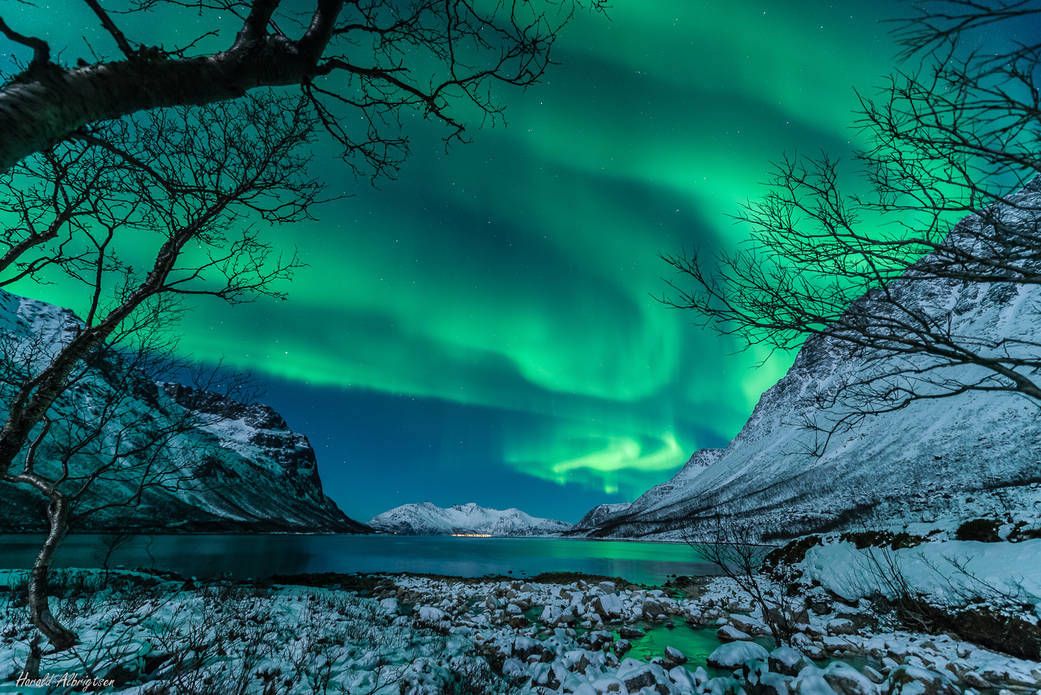Aurora: A Spectacular Natural Light Show
Have you ever witnessed a colorful and mesmerizing display of lights in the sky that leaves you spellbound? If yes, then you must have experienced the Aurora. Also known as the Northern Lights or Southern Lights, the Aurora is a natural phenomenon that occurs when charged particles from the sun collide with the Earth's magnetic field. This interaction results in a stunning light show in the polar regions of the world. In this article, we will delve deeper into the fascinating world of Aurora and explore its various aspects.
What Causes Aurora?
Aurora is a result of the interaction between the solar wind and the Earth's magnetic field. The sun continuously releases charged particles in the form of solar wind, which travels towards the Earth. The Earth's magnetic field acts as a shield and deflects most of the charged particles. However, some particles get trapped in the magnetic field and collide with the atoms and molecules in the Earth's atmosphere.
These collisions cause the atoms and molecules to emit light, which we see as the Aurora. The colors of the Aurora depend on the type of atom or molecule that is colliding with the charged particles. For instance, oxygen molecules emit green and red light, while nitrogen molecules emit blue and purple light.
Where Can You See Aurora?
Aurora can be seen in the polar regions of the world, which includes the Arctic and Antarctic regions. The best time to see Aurora is during the winter months when the nights are long and dark. However, Aurora can also be seen during the summer months, but it is not as visible as during the winter months.
If you want to witness the Aurora, you should plan a trip to the polar regions. There are several places where you can see Aurora, such as Norway, Sweden, Finland, Canada, Alaska, and Antarctica. These places offer a clear view of the sky, which makes it easier to witness the Aurora.
Types of Aurora
There are two types of Aurora: the Aurora Borealis and the Aurora Australis. The Aurora Borealis, also known as the Northern Lights, can be seen in the northern hemisphere, while the Aurora Australis, also known as the Southern Lights, can be seen in the southern hemisphere. Both types of Aurora are similar in nature, but they occur in different parts of the world.
The Aurora Borealis is visible in the northern hemisphere, which includes countries such as Norway, Sweden, Finland, Iceland, and Canada. The Aurora Australis, on the other hand, is visible in the southern hemisphere, which includes countries such as Australia, New Zealand, and Antarctica.
Colors of Aurora
Aurora is a beautiful natural light show that displays an array of colors. The colors of Aurora depend on the type of atom or molecule that is colliding with the charged particles. The most common colors of Aurora are green, red, blue, and purple.
Green is the most common color of Aurora and is caused by oxygen atoms colliding with the charged particles. Red is also caused by oxygen atoms, but it requires higher energy levels than green. Blue and purple are caused by nitrogen atoms colliding with the charged particles.
Sometimes, Aurora displays rare colors such as pink, yellow, and white. These colors are caused by a combination of different atoms and molecules colliding with the charged particles.
Myths and Legends Surrounding Aurora
Aurora has fascinated humans for centuries, and several myths and legends surround this natural phenomenon. In ancient times, people believed that Aurora was a sign of the gods, and it was considered a good omen. Some cultures believed that Aurora was a bridge between heaven and earth, and it allowed the spirits of the dead to cross over.
In Norse mythology, Aurora was believed to be the armor of the Valkyries, whowould ride across the sky to gather fallen warriors and take them to Valhalla. In Finnish mythology, Aurora was believed to be a firefox that created the Northern Lights by sweeping its tail across the snow. In Inuit mythology, Aurora was believed to be the spirits of the dead playing a game with a walrus skull.
Despite these myths and legends, scientists have been able to explain the scientific phenomenon behind Aurora. However, the beauty and wonder of Aurora continue to captivate people around the world.
Tips for Viewing Aurora
If you are planning to witness Aurora, here are some tips that can help you have the best experience:
01.Choose a clear night with little to no moonlight. The darker the sky, the better the view of Aurora.
02.Find a spot with a clear view of the northern or southern horizon, depending on which type of Aurora you want to see.
03.Dress warmly in layers, as the polar regions can be extremely cold.
04.Bring a camera and a tripod to capture the beautiful lights.
05.Be patient and allow your eyes to adjust to the dark. It may take some time for Aurora to appear.
Aurora is a spectacular natural light show that occurs in the polar regions of the world. It is a result of the interaction between the solar wind and the Earth's magnetic field, and it displays an array of colors that depend on the type of atom or molecule that is colliding with the charged particles. Although scientists have explained the scientific phenomenon behind Aurora, the beauty and wonder of this natural phenomenon continue to captivate people around the world. So, if you have not witnessed Aurora yet, plan a trip to the polar regions and experience the magic for yourself!
Labels: Interesting, nature, travel


0 Comments:
Post a Comment
Subscribe to Post Comments [Atom]
<< Home